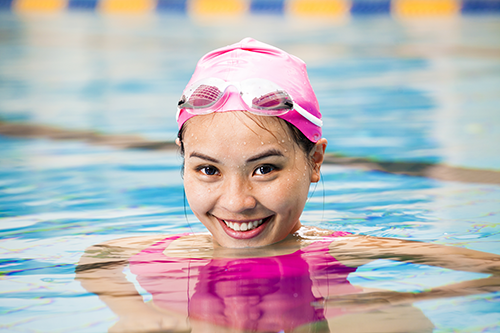
Protect Your Eyes from Sports-Related Injury
April is Sports Eye Safety Month
According to the American Academy of Ophthalmology (AAOP), there are an estimated 100,000 sports-related eye injuries that happen each year, resulting in over 13,500 cases of permanent vision loss. The AAOP has designated April as Sports Eye Safety Month to raise awareness of the importance of using protective eyewear during high-intensity sports, to significantly reduce the risk of serious injuries that may damage a person’s vision or cause blindness.
Steven Rhee, D.O., and Medical Director of Hawaiian Eye Center said, “Eye injuries occur most often in baseball, basketball, racquet sports, and water sports, due to the high chance of hands and elbows that may strike someone in the face, or abrasive particles and UV rays from the water that may injure the eye’s cornea.” Dr. Rhee also noted, “According to the American Academy of Family Physicians, over 90 percent of these injuries are preventable.”
Sports that are most likely to result in blunt trauma and eye injuries are ranked as “high-risk”, and unsurprisingly, the high-risk sports mentioned cause eye injuries due to their use of balls, rackets, or sticks, all associated with a higher rate of injuries to the eyes. Contact sports also have a higher rate of penetrating eye injuries caused by debris from equipment or the environment, however, such injuries would be easily prevented by wearing protective eyewear during said physical activity.
Aside from injuries to eyes caused by contact sports, water, and outdoor sports that cause radiation eye injuries are often overlooked. Water, snow, and ice create a reflective surface for ultraviolet (UV) rays from the sun and can cause photokeratitis, or UV keratitis, which is when the cornea is sunburned and becomes inflamed. Extended exposure to UV light can also lead to serious eye diseases, especially for individuals of fair complexion and/or using photosynthesizing drugs.
To conclude, athletes should wear protective eyewear that’s appropriate for their sport. Eye guards and goggles are best for popular sports like baseball, basketball, soccer, football, hockey, and outdoor sports – and are highly recommended by experts. (This is in addition to helmets and faceguards for select sports.) Polycarbonate swimming goggles with secured head bands are also recommended for use during water sports. Athletes who wear glasses or contacts should speak with their doctor about prescription sports eye guards for optimal vision and safety during physical activity.



Leave a Reply